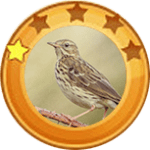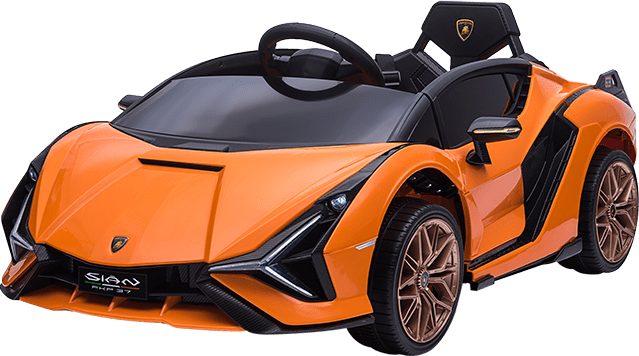- Home
- Shop
- Forest Series
- Grassland Series
- Desert Series
- Contact
- Home
- Shop
- Forest Series
- Grassland Series
- Desert Series
- Contact






COOL LAMBORGHINI ROADSTER
Our stylish Lamborghini Sian ride on car is officially licensed with awesome look and practical functions that is attractive for every kids. It’s an ideal gift for kids of 37-95 months.
SAFE & COMFORTABLE DRIVING
Our ride on vehicle is equipped with a 3-point safety belt that can best protect your kids when driving. Besides, 4-wheel spring suspension also ensures stability and security when riding on various terrains.
MANUAL & REMOTE CONTROL
Remote Control: Parent can operate the ride on car with remote control if kids are too young. Manual Mode: When growing up, kids can drive the car by themselves through foot pedal and steering wheel.


CHARACTERISTICS
The Chipmunk is a member of the family Mammalia, Rodentia and Sciuridae. It is also known as the Striped Squirrel, the Timber Tiger and the Mini-bear. The body length among most Chipmunks ranges from 5.5 to 6.3 inches and the tail length is 5 Inches. Chipmunks typically weigh about 0.02 pounds and live about 5 to 10 years. They have small but prominent ears which face forwards, and small eyes on the sides of their heads. Most wild Chipmunks are lively.


Lorem ipsum dolor sit amet, consectetur adipiscing elit. Ut elit tellus, luctus nec ullamcorper mattis, pulvinar dapibus leo.


CHARACTERISTICS
The Meadow Pipit is a small passerine bird. This is a widespread and often abundant small pipit, 14.5–15 cm (5+1⁄2–6 in) long and 15–22 g (0.53–0.78 oz) weight. It is an undistinguished-looking species on the ground, mainly brown above and buff below, with darker streaking on most of its plumage; the tail is brown, with narrow white side edges. It has a thin bill and pale pinkish-yellow legs; the hind claw is notably long, longer than the rest of the hind toes.

RANGE AND HABITAT
The Meadow Pipit is primarily a species of open habitats, either uncultivated or low-intensity agriculture, such as pasture, bogs, and moorland, but also occurs in low numbers in arable croplands. In winter, it also uses saltmarshes and sometimes open woodlands. It is a fairly terrestrial pipit, always feeding on the ground, but uses elevated perches such as shrubs, fence lines, or electricity wires as vantage points to watch for predators.

DIET
The Meadow Pipit’s food is primarily insects and other invertebrates, mostly small items less than 5 mm (3⁄16 in) long. It also eats the seeds of grasses, sedges, rushes, and heather, and crowberry berries, mainly in winter.

BEHAVIOR
The Meadow Pipit breeds in much of the Palearctic, from southeastern Greenland and Iceland east to just east of the Ural Mountains in Russia, and south to central France and Romania; an isolated population also occurs in the Caucasus Mountains. It is migratory over most of its range, wintering in southern Europe, North Africa, and south-western Asia, but is resident year-round in western Europe, though even here many birds move to the coast or lowlands in winter.
The nest is on the ground hidden in dense vegetation, with two to seven (most often three to five) eggs; the eggs hatch after 11–15 days, with the chicks fledging 10–14 days after hatching. Two broods are commonly raised each year. This species is one of the most important nest hosts of the cuckoo, and it is also an important prey species for merlins and hen harriers.

The Chipmunk is a member of the family Mammalia, Rodentia and Sciuridae. It is also known as the Striped Squirrel, the Timber Tiger and the Mini-bear. The body length among most Chipmunks ranges from 5.5 to 6.3 inches and the tail length is 5 inches. Chipmunks typically weigh about 0.02 pounds and live about 5 to 10 years. They have small but prominent ears which face forwards, small eyes on the sides of their heads. Most wild Chipmunks are lively.
The Red Squirrel, a member of the Sciuridae, is an arboreal, omnivorous rodent often referred to as a Forest Seeder and folklore as the Devil King Squirrel.
The Arizona Gray Squirrel, also known as the American Gray Squirrel, is a member of the family Rodentia and Sciuridae. It is small in size, with gray fur and a belly between white and cream. It has long ears, no tufts of fur and a fluffy tail edged in white. The body is about 16-20 inches long and weighs up to 1.4 pounds.
The Rock Squirrel, also known as Sao Maozi or Stone Mouse, belongs to the rodent and is a species in the family Sciuridae. The most common natural predators of the Rock Squirrel include bobcats, owls, eagles and snakes. Though the Rock Squirrel is cute, alert, and courageous, it is still considered a pest due to its habit of destroying crops.
The Abert’s Squirrel is a member of the genus Sciurus with a body length of 18-22.8 inches, a tail length of 7.5-9.8 inches and a weight of 2.2 pounds, and can live up to 10 years in the wild. Its most distinctive feature is tassels of fur about 0.8-1.2 inches long at the tip of its ears, which looks very interesting. In addition, it is alert and agile.

European Cuckoo + Meadow Pipit Partner for Survival
Believe it or not, the baby in this picture is the huge brown bird on the left. It is a European cuckoo, being fed by a fully-grown meadow pipit, who is only half the side of the baby brute. How the European cuckoo manages this feat is a story both interesting and sad. The hawk-shaped, foot-long female European cuckoo is one of the world’s most irresponsible mothers. She lays her single egg, in the flufflined nest of a six-inch meadow pipit, then flies away and never bothers about her offspring again. As soon as her baby hatches, it shows that it has inherited its mother’s piratical character. It inches across the nest, burrows in turn underneath each of the cheeping, newlyhatched meadow pipits, and pushes it over the side of the nest to its death on the ground. With the nest all to itself, the European cuckoo starts clamouring loudly for food, gaping open its yellow beak, until the poor deceived parent meadow pipits fill it full of insects. When it is able to fly, the European cuckoo takes off, with never a thank-you to the meadow pipits who have fed their enormous adopted baby until it is twice as big and fat as they are.



Follow Us: